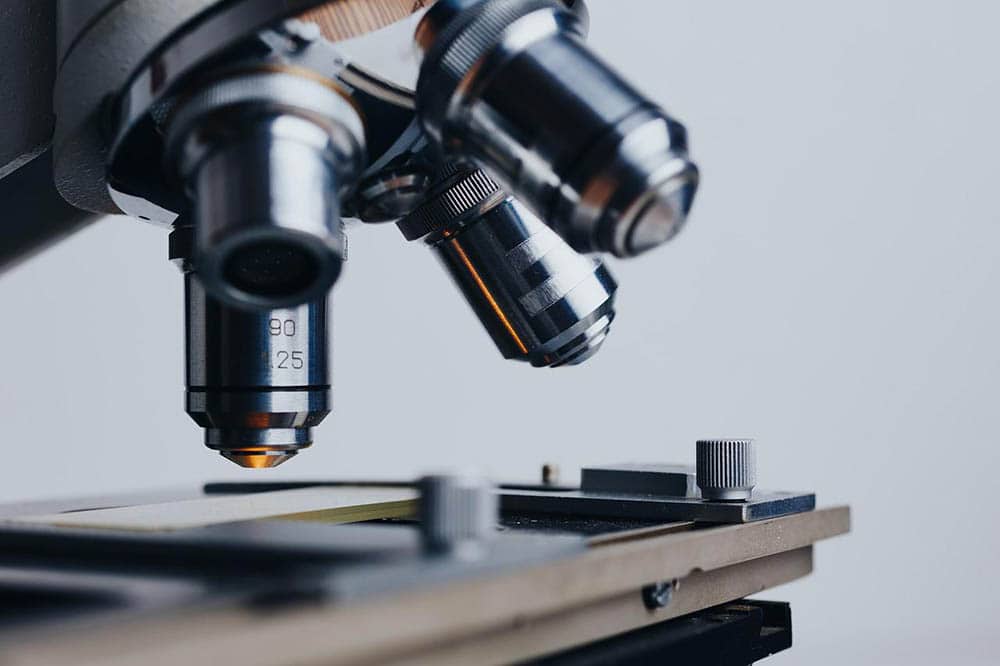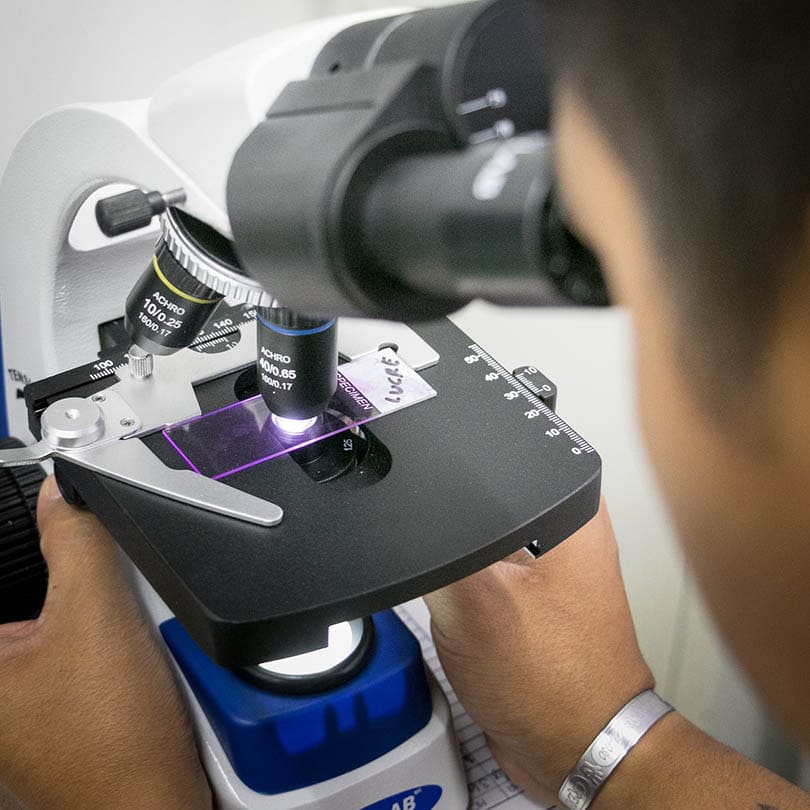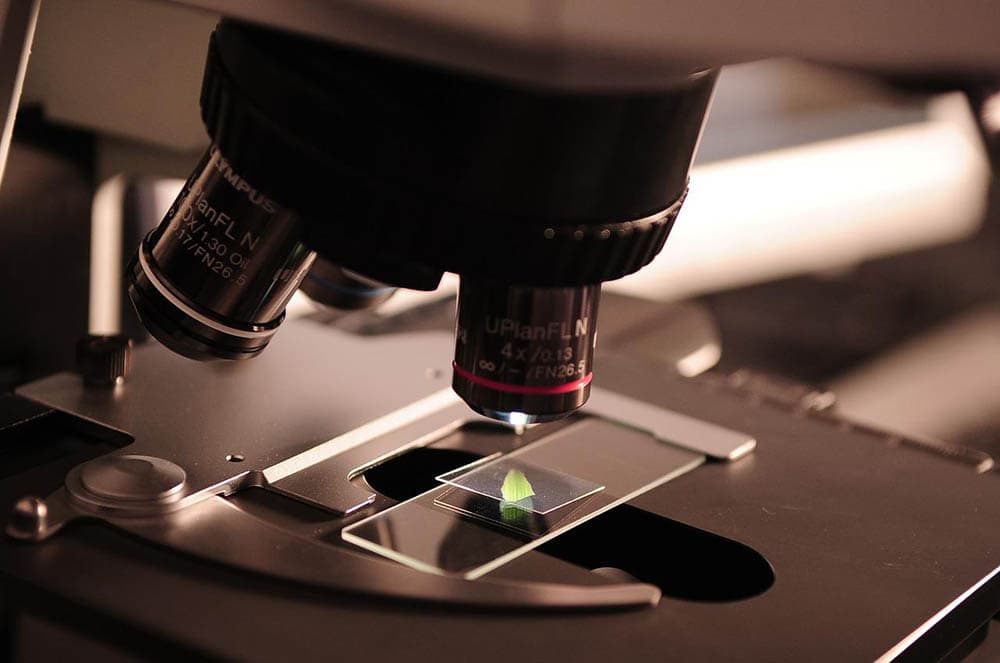What Is Depth of Field & Depth of Focus on a Microscope?
Last Updated on

The depth of focus and the depth of field are two very important principles when it comes to microscopes. A lot of people think they are one and the same because they both play critical roles in determining image clarity, focus, and working distance.
Look at the depth of field1, for example. There’s no way you can change the magnification of a microscope and expect it to remain a constant. And once this variable changes, other variables are inevitably going to change as well.
To better understand the difference between these two concepts, read on below for a detailed explanation.

Depth Of Field
Whenever we use an optical instrument to study or observe a specimen, we get to see two object planes in focus—the plane nearest to the user and the one farthest. “Depth of field” refers to the distance between those two planes. But that’s just one way of understanding what the depth of field is. In microscopy, the definition can be a bit complex.
We often say the depth of field is an objective lens’ axial resolving power, with respect to its optical axis. And whatever number you end up getting after all your calculations will be largely influenced by the objective lens numerical aperture. In addition, seeing as it’s usually substantially small, your unit of measurement will be microns.

Depth Of Focus
What distinguishes the depth of focus from the depth of field? It’s the planes. While the depth of field as a concept talks about the distance between the two object planes, the depth of focus focuses on the image planes. Some books like to use the word ‘space’ instead of a plane, but it’s pretty much the same thing.
So by definition, the depth of focus is the plane’s axial depth within which an image generated appears to be considerably sharp—all the while ensuring the objective lens and the object plane’s positions are maintained.
If you don’t wish to differentiate them using the planes, you can think of it this way:
The depth of focus is purely concerned with the capability of an optical instrument’s sensor to maintain the focus of an image (while its position is being readjusted), whereas the depth of field concentrates on the quality of the image being produced by a stationary lens (while the specimen is being readjusted).
In a nutshell, the depth of focus is a more complex and advanced concept. How else can it not be, seeing as it gives thought to the objective lens’ sensor plane, in addition to the image space’s tip and tilt? Just like the depth of field, the depth of focus will also be influenced by changes in resolution, magnification power, and numerical aperture.
Significance of the Depth of Field
Working with the wrong depth of field while making microscopic observations is practically a waste of time. You’ll constantly feel the need to move your specimen slide or glass in different directions to be able to get a sharp or crispy image.
It’s imperative to take note of the fact that the depth of field is the one thing that determines a microscope’s focusing axis stability. And without it, all images produced will be blurry.

Factors Influencing the Depth of Field
Because the objective lens and the field of view are interlinked, it’s only right to assume that the factors which influence the former also affect the latter. They include:
1. Magnification
In optics, we define magnification as the image size relative to its object size. We don’t like to use the term “enlargement” because that would imply an image cannot be smaller than the actual size of its object. Which, by the way, is possible with the help of a concave lens.
Lenses that have a high magnification power, such as an oil immersion lens, have a narrow depth of field. On the flip side, they don’t have a negative but a positive effect on the field of focus.
2. Numerical Aperture
Numerical aperture denotes the angles over which light is allowed to pass through your microscope’s lens. It’s abbreviated as “NA,” and doesn’t have any metric unit. If your numeric aperture is small, the light allowed to enter your lens won’t be much. That also means that your instrument won’t be able to generate a sharp or bright image, since light is an essential element in the process.
From that definition, you can clearly see that magnification is not the only factor considered critical to image resolution. The numerical aperture has always been an important cog in that wheel as well. It’s just not as popular as magnification because most users don’t usually get the opportunity to work with different numerical apertures. They are normally stuck with the same microscope and the same objective lens.
The relationship between the numerical aperture and the depth of field is inversely pro-rata. If you choose a microscope with a low numerical aperture, your depth of field will be narrow.
This is the formula to use while you’re trying to figure out what your depth of field is:
D = ƛ. (n2 – NA2) / 2.NA2
NA is the numerical aperture of your microscope’s objective lens; n denotes the refractive index of the slide between the lens and your specimen, ƛ is the symbol for lambda, and it represents the light source’s wavelength, and finally, we have D; the depth of field.

3. Resolution
Your optical instrument’s ability to distinguish different details of a specimen is its resolution power. You can still define it as the shortest distance at which various specimen points will be visible to any observer, as separate entities. This aspect is intrinsically linked to your light’s wavelength, as well as the numerical aperture and the depth of field.
The higher the numerical aperture, the lower the resolution and narrower the depth of field. That’s because the depth of field’s range is primarily impacted by the distance that exists between the intersecting points of the light passing through the aperture, and the lens’ angular resolution.
4. Specimen & Image Contrast
It would be wrong to ignore the contrast factor in this equation. It’s linked to the microscope’s resolution, and thus, affects the depth of field.
For instance, a higher spatial frequency will be required if the specimen in question has details that are tinier than usual. Spatial frequency is just a fancy way of describing an image’s light and dark periodic distributions. Since it’s a measure of resolution, it indirectly influences the depth of field. And in this case, the result is a narrower depth of field.
5. Working Distance
So the “working distance” concept is used to describe the free space you see between the specimen’s surface and the objective lens’ front edge. It has a significant effect on any microscope’s depth of field. The longer this distance is, the broader the depth of field, and vice versa.


Frequently Asked Questions
Does power objective affect the depth of focus?
Yes, it does. If you wish to work with the greatest depth of focus, you have to reduce the power objective. Because the minute you ramp up your power, the depth of focus goes down. Subsequently, narrowing the total area of the specimen that’s in focus.
Is the depth of field different on every microscope?
Your instrument’s depth of field will depend on the objective lens that has been installed in its design. The lens has a numerical aperture that’s inversely proportional to the scope’s depth of field. The lower the aperture, the higher the field of depth. But if it’s high, the depth will be shallow/narrow.
What’s the relationship between focal length and depth of field?
Focal length as a factor is meant to determine an optical instrument’s magnification. Assuming the lens is wider, its focal length will be shorter. This in turn gives the user the option of capturing a broader depth of field. And if the lens is more zoomed in, the depth of field automatically becomes shallower.

Conclusion
To widen or restrict your depth of field, you just have to adjust the factors that we’ve listed above. But don’t forget one thing: changing them will also change the depth of focus, as some of them directly or indirectly influence it.
- Related Read: 5 Best Dissecting Microscopes – Reviews & Top Picks
Featured Image Credit By: kkolosov, Pixabay
About the Author Robert Sparks
Robert’s obsession with all things optical started early in life, when his optician father would bring home prototypes for Robert to play with. Nowadays, Robert is dedicated to helping others find the right optics for their needs. His hobbies include astronomy, astrophysics, and model building. Originally from Newark, NJ, he resides in Santa Fe, New Mexico, where the nighttime skies are filled with glittering stars.
Related Articles:
Binocular Magnification Chart: Numbers & Distances Compared
What Is the Best Binocular Magnification for Hunting? Optical Features Explained
When Were Binoculars Invented? History, Today & Future
How to Clean a Refractor Telescope: Step-by-Step Guide
How to Clean a Telescope Eyepiece: Step-by-Step Guide
How to Clean a Rifle Scope: 8 Expert Tips
Monocular vs Telescope: Differences Explained (With Pictures)
What Is a Monocular Used For? 8 Common Functions
